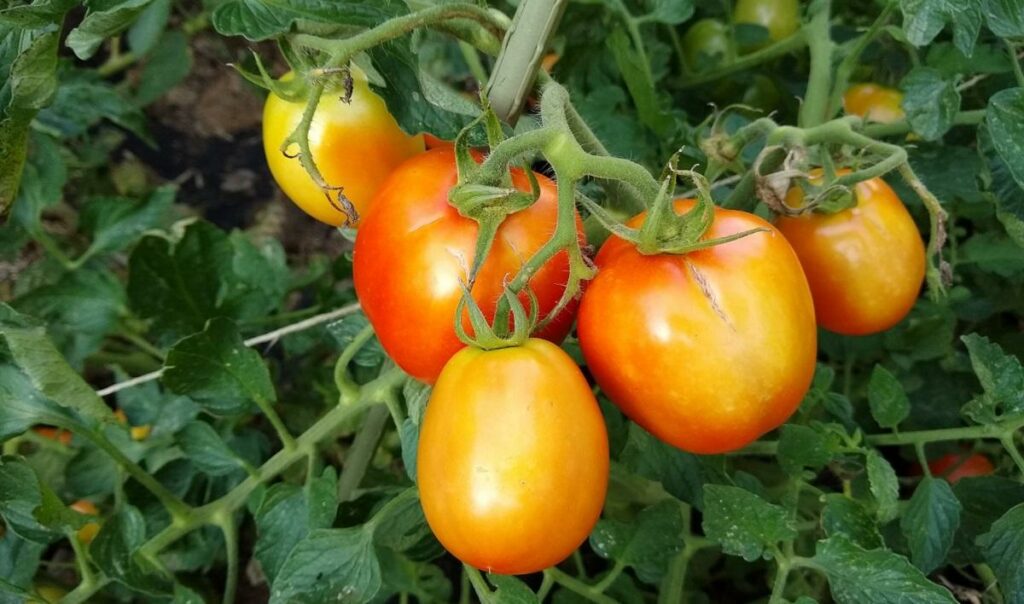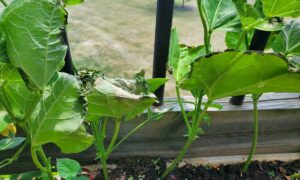Common Heat-Related Plant Disorders
go.ncsu.edu/readext?1011540
en Español / em Português
El inglés es el idioma de control de esta página. En la medida en que haya algún conflicto entre la traducción al inglés y la traducción, el inglés prevalece.
Al hacer clic en el enlace de traducción se activa un servicio de traducción gratuito para convertir la página al español. Al igual que con cualquier traducción por Internet, la conversión no es sensible al contexto y puede que no traduzca el texto en su significado original. NC State Extension no garantiza la exactitud del texto traducido. Por favor, tenga en cuenta que algunas aplicaciones y/o servicios pueden no funcionar como se espera cuando se traducen.
Português
Inglês é o idioma de controle desta página. Na medida que haja algum conflito entre o texto original em Inglês e a tradução, o Inglês prevalece.
Ao clicar no link de tradução, um serviço gratuito de tradução será ativado para converter a página para o Português. Como em qualquer tradução pela internet, a conversão não é sensivel ao contexto e pode não ocorrer a tradução para o significado orginal. O serviço de Extensão da Carolina do Norte (NC State Extension) não garante a exatidão do texto traduzido. Por favor, observe que algumas funções ou serviços podem não funcionar como esperado após a tradução.
English
English is the controlling language of this page. To the extent there is any conflict between the English text and the translation, English controls.
Clicking on the translation link activates a free translation service to convert the page to Spanish. As with any Internet translation, the conversion is not context-sensitive and may not translate the text to its original meaning. NC State Extension does not guarantee the accuracy of the translated text. Please note that some applications and/or services may not function as expected when translated.
Collapse ▲Extreme temperatures can have a variety of impacts to agricultural crops. Our own human needs for additional water and sun protection translates similarly into what plants experience when they are out in a hot sunny field.
Plants can experience sunscald, resulting in damaged plant cells that form discolored areas on leaf or fruit surfaces. Sunscald is exhibited when climatic conditions are excessively hot and often coupled with intense sun exposure. Typically resulting in first a yellow or white discoloration on fruits or vegetables, sunscald can come on following the loss of plant leaves due to storms or other pest damage, or in cases where plant leaf growth is distorted because of nutritional imbalances or other plant damage.
Leaf scorch is another symptom that can be seen during hot and dry periods. This disorder results when the plant’s vascular system doesn’t have enough moisture to balance demands for cooling the plant’s leaf surfaces, through a process known as evapotranspiration. Patterns of damage with leaf scorch first appear on the leaf edges, but will eventually spread if no steps are taken. With both sunscald and leaf scorch, the damage observed on the affected parts of the plant will persist, however the remaining plant tissues can recover, and the plant can continue to survive and thrive.
Wilting of plants can also be a common symptom of plants exhibiting heat and moisture stress. Ensuring that adequate water is being delivered to plants, and water conservation practices like mulching and drip irrigation are employed as first steps to avoiding heat impacts to gardens and fields. Black plastic mulches and landscape fabrics can increase a plant’s water needs on intensely hot days, and it’s always a good idea to test the soil with your own observations to rule out an irrigation line problem if plants consistently look wilted.
Whenever plants are stressed, action needs to be taken in order to prevent the loss of the plant, or crops, in the field. Many plant diseases can cause leaf discoloration or wilting, so it’s important to differentiate among the plant symptoms you see. Plant samples sent to specialized labs, such as the NCDA’s Agronomic Division or the NC State Plant Disease and Insect Clinic can help determine if nutritional imbalances or pathogens are responsible, and nothing compares to the regular and attentive eye of the grower in the field. Field observations over time can clue you into growing problems BEFORE they take down an entire row of crops, and remember that N.C. Cooperative Extension Agents often can help grower’s assess and diagnose plant symptoms.






